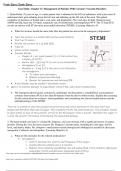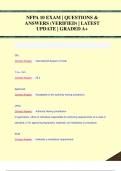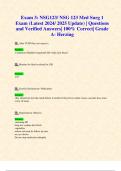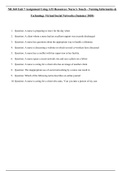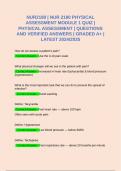Exam (elaborations)
Exam (elaborations) TEST BANK FOR CHEMISTRY FOR TODAY General, Organic and Biochemistry 8th Edition By Maren S. Hansen (Study Guide and Student Solutions Manual)
- Course
- TEST BANK FOR CHEMISTRY FOR TODAY General, Organic and Biochemistry 8th Edition By Maren S. Hansen
- Institution
- Harvard University
Exam (elaborations) TEST BANK FOR CHEMISTRY FOR TODAY General, Organic and Biochemistry 8th Edition By Maren S. Hansen (Study Guide and Student Solutions Manual) Study Guide and Student Solutions Manual Prepared by Jennifer P. Harris Australia • Brazil • Japan • Korea • Mexico • Sing...
[Show more]




